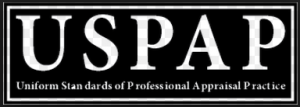In the first part, I indicated that I had to turn this dockominium valuation assignment down. ‘Curious why?
There are many reasons.
Let’s start with the most obvious. It should be clear that I don’t share any bit of optimism about this asset that the prospective purchaser does. That means that what I would provide would squash his hopes and dreams if he were to use it for financing or obtaining investors. I sleep just fine because I still have my moral compass and I intend to keep it that way.
Then there’s this little thing called USPAP, the Uniform Standards of Professional Appraisal Practice.  Back in the 1990’s, there was this big fiasco going on about syndication, which also extended into timeshares. The problem was that banks and investors were accepting gross sellout numbers as market value. So along came USPAP that basically said the whole does not necessary equal the sum of the parts. That drastically changed the playing field in that industry from a valuation perspective. Think about it – isn’t this the exact same concept but with a different type of real estate? As Sarah Palin would say, “you betcha!’.
Back in the 1990’s, there was this big fiasco going on about syndication, which also extended into timeshares. The problem was that banks and investors were accepting gross sellout numbers as market value. So along came USPAP that basically said the whole does not necessary equal the sum of the parts. That drastically changed the playing field in that industry from a valuation perspective. Think about it – isn’t this the exact same concept but with a different type of real estate? As Sarah Palin would say, “you betcha!’.
That creates a couple of problems for the yours truly and any appraiser. First, they have to be licensed in this jurisdiction and that would make them subject to disciplining if they simply report gross sellout as market value and instead of market value. In my case, I’d have to obtain a temporary appraisal practice license and since they require seeing the engagement letter first, they’d be all over this before I could even begin the assignment. No way that license would be granted, so no way the assignment could be done.
You might be thinking, if I provided a market value and a gross sellout, that would be fine, right? Yes, it would be. Unfortunately, the purchaser wanted gross sellout and even though he agreed to both after my consultation with him, he switched back to gross sellout as the only value indicator. Gross sellout was about 2.5 times what the asking price of the marina was. Do you really think a bank would give away an asset they took back for about a third of what it was worth? No way. That alone means it wasn’t worth the gross sellout.
What’s the takeaway from this three part series? Three things.
- Gross sellout always seems attractive, but it’s only that way when demand exceeds supply.
- Gross sellout isn’t market value. The banker will recognize that, so expecting a big gross sellout number reported as market value will run into the sniff test eventually.
- The economic fundamentals of the market need to be there. There are too many check and balances whereby nearly all need to be pointing in the right direction. Things like a growing population, increasing incomes, a lack of vacancy, slip rental rates aggressively increasing, available financing sources (unless we’re talking yachts where personal loans and deep pockets carry the day), and a lack of competitive dockominium projects is are signs that a dockominium might work.

